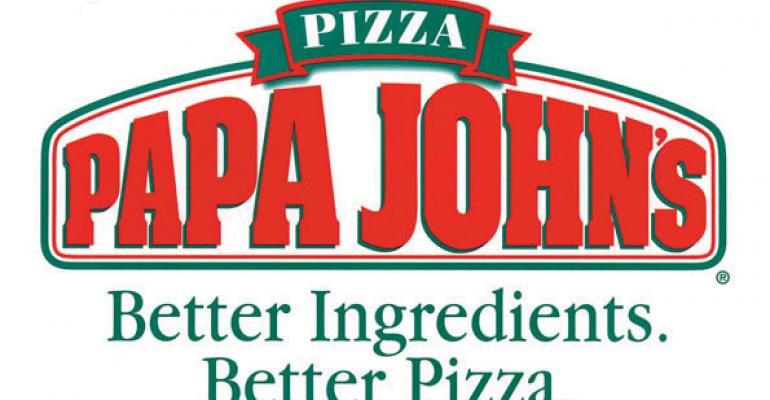Robust same-store sales, particularly in North America, helped Papa John’s offset skyrocketing cheese prices during the third quarter.
Same-store sales rose 7.4 percent in North America during the quarter ended Sept. 28. So far this year, domestic same-store sales have risen 7.7 percent. Executives said on a conference call Wednesday that the chain is well on its way to its 11th straight year of flat or positive same-store sales.
“We’re in the home stretch of an excellent 2014,” said John Schnatter, Papa John’s founder and CEO. “The results speak largely for themselves.”
Revenue increased 12.7 percent, to $390.4 million, during the quarter, from $346.3 million the previous year. Net income rose 12.6 percent, to $16.1 million, from $14.3 million the previous year.
As a result of its sales performance, Papa John’s increased guidance for full-year same-store sales, from 4 percent to 6 percent to 5 percent to 7 percent. It expects earnings per share to range from $1.68 to $1.74, an increase from $1.64 to $1.72.
The company’s stock rose 5 percent Wednesday on the news. Papa John’s stock has risen 30 percent since September, though it’s still off 11 percent from the 52-week high of $54.99 that it hit in March.
However, executives noted a pair of headwinds. The first is the price of cheese. Dairy prices hit record highs in September, due largely to high demand from Asia.
Papa John’s market price for cheese averaged $2.14 per pound during the third quarter, 23 percent higher than the $1.74 per pound it paid in the third quarter of last year. Cost of sales at company restaurants, as a result, rose 11 percent during the quarter.
Those prices helped Papa John’s sales at its commissaries, which distribute dough and cheese to operators. Those sales increased $11.2 million, to $149.2 million, from $138 million the previous year.
The other headwind was China. International same-store sales increased 5.5 percent, and income from the company’s international operations increased by $500,000. The company said that “unfavorable results” in China, including an impairment charge of $700,000 for eight locations in that country, offset the international performance.
Schnatter and other executives participated in the conference call from China, amid a tour of the market to determine how to fix operations there. China is largely a company-owned market.
“Beijing continues to be a challenge,” Schnatter said. “We continue our evaluation of what we need to be successful in the China market.”
Papa John’s is one of a handful of U.S. brands hurt by a scandal in that country. Chinese authorities suspended the operations of a subsidiary of U.S. company OSI Group after it was found to be repackaging expired meat. Brands like KFC, McDonald’s and others have been hit by steeply falling sales there as a result.
But Papa John’s executives suggested that its problems in China date to well before that scandal.
“If you look at the financial results over the last several quarters, we’ve got some improvements needed in the market,” chief operating officer Steve Ritchie said.
Ritchie added that the market should be fixed before the company can consider selling company-owned units there to franchisees.
But the China problems haven’t affected the company’s financial performance.
Source of sales strength
(Continued from page 1)
Papa John’s sales strength comes despite an intensely competitive pizza market involving heavy discounts and promotions.
The company has aggressively used digital technology to make it easier for customers to order food. About 50 percent of the company’s orders now come through digital channels. The “easy-to-use digital channels” enable customers to have a better ordering experience, Schnatter said.
Janney Capital Markets analyst Mark Kalinowski said in a note Wednesday that pizza chains like Papa John’s and Domino’s Pizza are both well ahead of the curve in using technology at their restaurants, which should keep them highly competitive.
Those chains “continue to harvest advantages they have earned through many years of investment on this front,” Kalinowski wrote. “We continue to view it as a likely long-term competitive advantage for these brands, as smaller/regional chains and mom-and-pop pizza outlets lack the resources to keep up.”
Papa John’s also said that almost half of its domestic restaurants, including all company-owned units, have installed its new point-of-sale system, called FOCUS. The company expects costs related to the system to decrease earnings before taxes by about $4 million this year, or 6 cents per share. That impact was $1.2 million during the third quarter, the company said. Papa John’s has sold $11.1 million worth of the system to franchisees in the first nine months of the year. The system should be fully complete by the end of the first quarter of 2015.
Contact Jonathan Maze at [email protected].
Follow him on Twitter: @jonathanmaze

